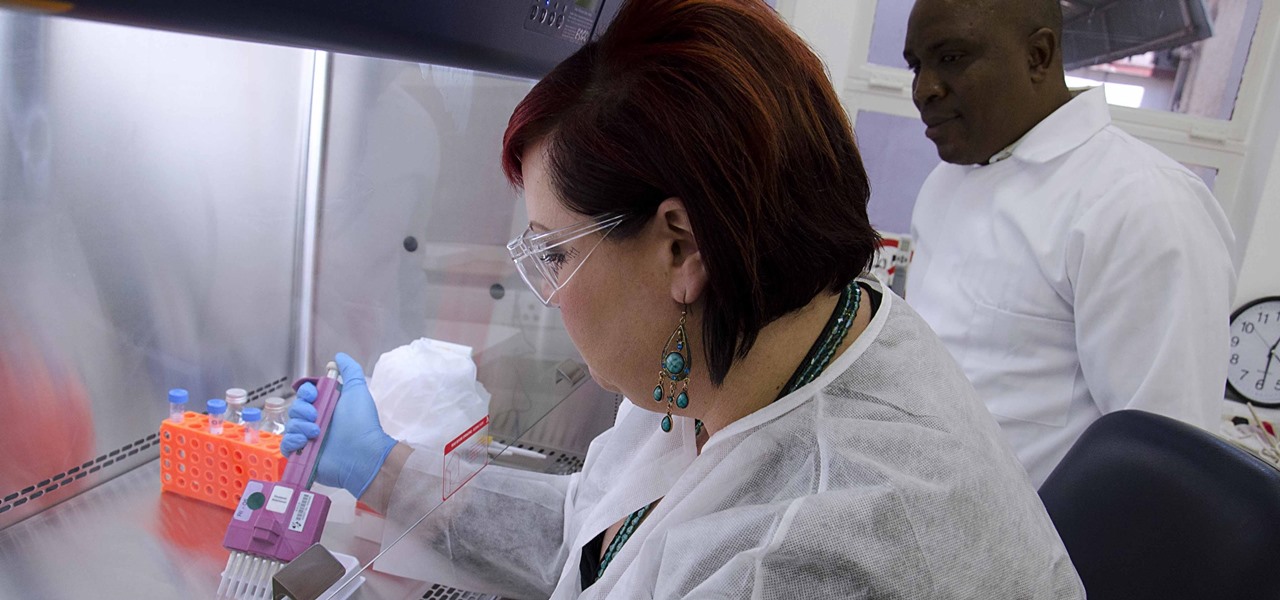HIV infections persist despite treatment that successfully decreases viral blood levels to the point where doctors can't detect the virus. But that doesn't mean the person is cured. The virus hides in the body, not replicating, just waiting for a chance to jump out of the shadows and reemerge.
It's very difficult for doctors to get a good read on how much virus is hiding in these spots. And it's even harder to know how much of that latent virus is capable of becoming infectious again.
The amount of latent HIV can be measured, but the current test is expensive and takes two weeks to produce results. All that may be changing, though. A research group from the University of Pittsburgh has developed a test to detect residual HIV that is less expensive, less time-consuming, and uses a smaller blood sample.
Their new test is described in a research paper by lead author Anwesha Sanyal, of the University of Pittsburgh, published May 29 in the journal Nature Medicine.
If We Can't Find It, Is the Virus Really There?
To understand the latent HIV viral pool, we need to understand the active, infectious viral pool. The life cycle of the HIV takes place in CD4 T lymphocyte cells of the immune system. The virus binds to the lymphocyte and injects its genetic material — viral RNA — into the cell. Once inside the cell, enzymes convert the viral RNA into DNA, and that DNA enters the cell's nucleus. The viral DNA uses the cell's machinery to make HIV proteins and copies of the viral RNA.
Those proteins migrate out of the nucleus, assemble into viral particles, and bud off the host cell's membrane to make new infectious viruses, bursting out of the CD4 cell and killing it in the process. In a tragic irony, CD4 cells are the precise immune cells whose job it is to kill invading microbes, like viruses.

In rare cases, CD4 cells can become infected and survive long enough to revert to a resting memory state. Memory T cells are cells that have interacted with a microbe and are waiting to activate the immune response if it reencounters the microbe. They don't have the mechanisms to allow for viral gene manufacturing, but the virus can live inside the cell when it's in a latent state, without creating new viruses. When activated, though, they can start spewing new virus and start the HIV infection anew.
About 1.1 million Americans have HIV infections. Treatment with anti-viral agents can decrease the amount of virus in the blood to levels so low they're undetectable. Because HIV persists in latent pools, we know treatment hasn't cured the infection. What we don't know is how much remains in hidden reservoirs and how much of it is capable of becoming active virus again. Knowing this value is the best indication of the real state of the infection.
Detecting the Undetectable
The research team from the University of Pittsburgh set out to develop an improved test for latent HIV that accurately and rapidly quantified the replication-competent HIV hidden in resting CD4 T lymphocytes.
The current "gold-standard" test is the quantitative viral outgrowth assay or Q-VOA, for short. This test requires two tubes of blood, from which the CD4 cells are isolated. They are stimulated in the lab to come out of a resting state, mixed with cells that will serve as the target for the virus from the stimulated cells to infect. After one to two weeks of incubation, the amount of virus present is measured.
The new test, the TZA test, detects a gene turned on by replicating HIV. This assay uses TZM-bl cells — laboratory test cells — that have the same HIV receptor on them as on CD4 cells, and also have an integrated copy of the ß-galactosidase gene. When the researcher mixes blood containing HIV with the TZM-bl cells, any replication-competent HIV reacts with ß-galactosidase, causing a colored reaction. They can then count those cells.
The TZA test produces results in one week compared to the two weeks needed for the gold standard test, at a third of the cost. It's also much more sensitive; a fact that's helping doctors understand how latent pools of HIV behave in patients with "undetectable" levels of the virus.
"Using this test, we demonstrated that asymptomatic patients on antiretroviral therapy carry a much larger HIV reservoir than previous estimates — as much as 70 times what the Q-VOA test was detecting," co-author Phalguni Gupta, of the University of Pittsburgh, said in a press release.
The best way to evaluate the effectiveness of HIV treatment is to measure all the virus left in the body, including these hidden reservoirs. The test developed by Sanyal and Gupta's team is a big step in that direction, that is also faster, cheaper, and requires a much smaller blood sample. Knowing the amount of HIV remaining in the body will help us truly determine the effectiveness of anti-viral therapy.
Just updated your iPhone? You'll find new emoji, enhanced security, podcast transcripts, Apple Cash virtual numbers, and other useful features. There are even new additions hidden within Safari. Find out what's new and changed on your iPhone with the iOS 17.4 update.


























Be the First to Comment
Share Your Thoughts